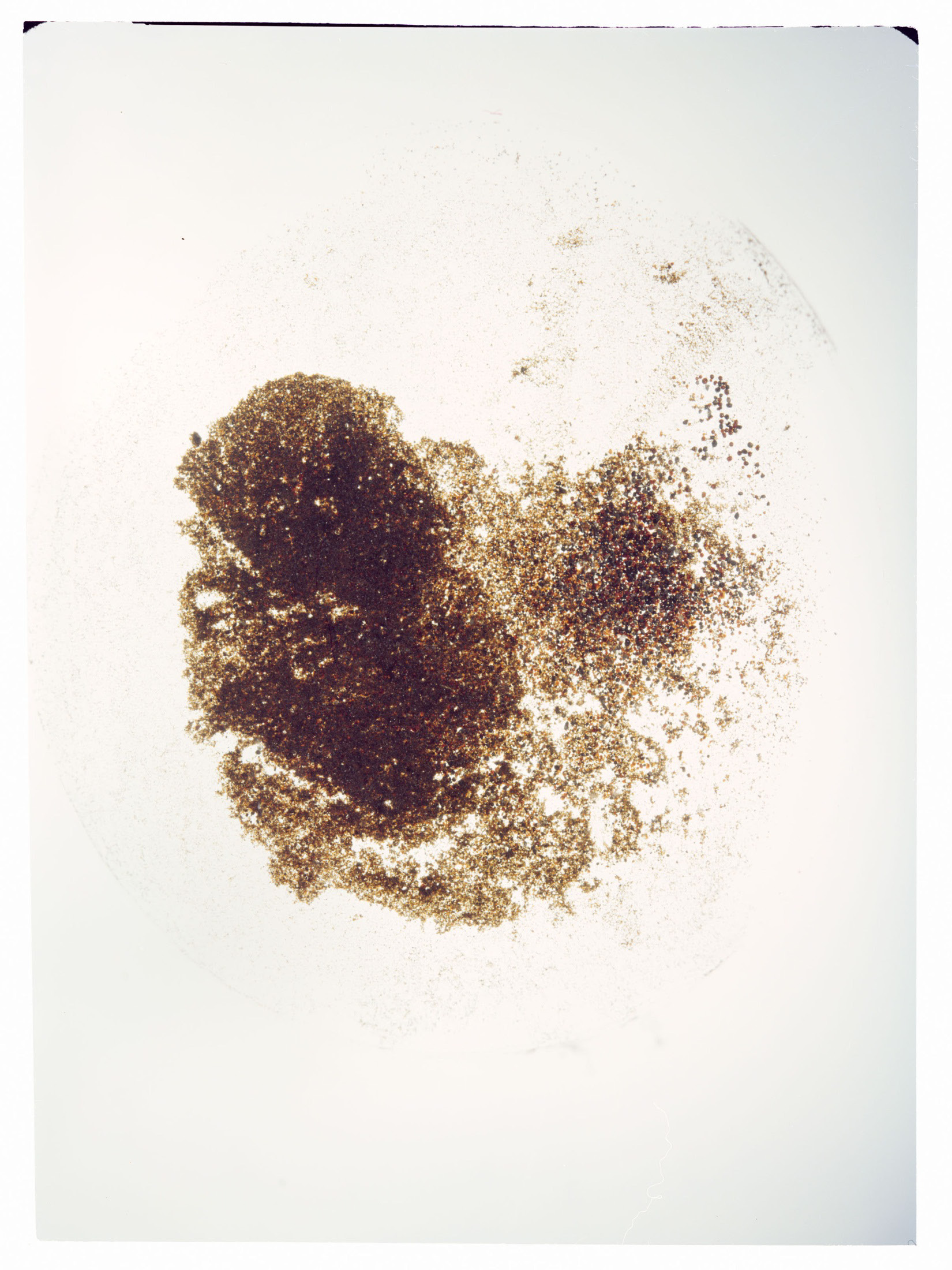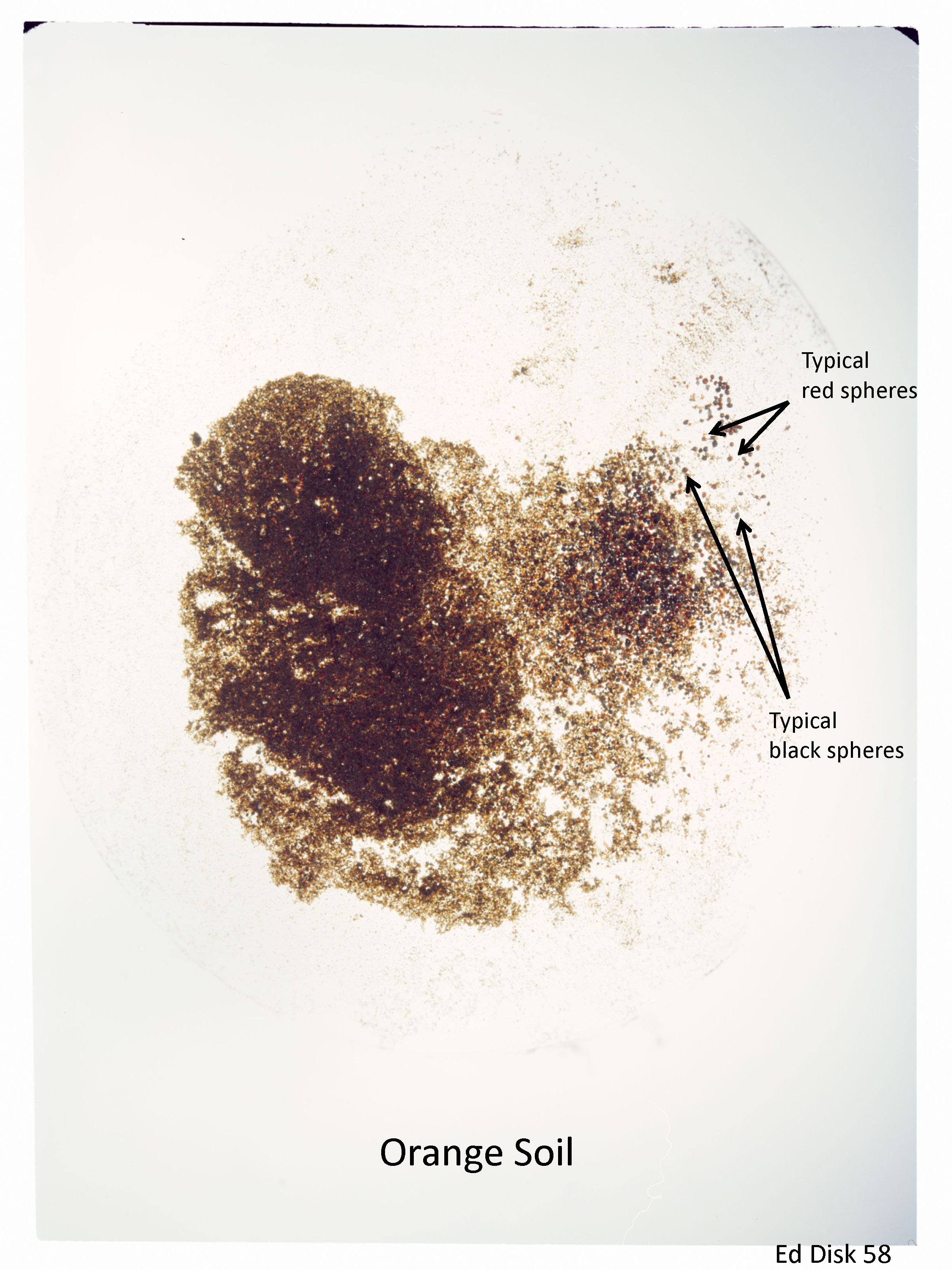Lunar Disk 58: Orange Soil
A mixture of mainly 40 to 60 micron dark red and black balls, and broken pieces of them, results in the orange color described by the Apollo 17 astronauts when they shoveled this unusual soil into a sample bag. This soil originated 3.5 billion years ago from sprays of lava blownout of a volcano (like Mount St. Helens in Washington) by escaping gas. While in flight the small droplets of lava cooled and formed glass balls which ranged in size from a few microns to 100 microns. (If the lava had contained less gas, it would have flowed gently out of the volcano as a lava to produce a basalt.)
Since, unlike the Earth, the Moon’s gravity is too weak to hold an atmosphere of the gases released on its surface, the nature of the gas that sprayed lavas into space is one of many questions still unanswered about the Moon. The gas could not have been like the air on earth, since oxygen and water vapor would have rusted the bright iron metal found in the samples of lunar rocks and soils.


